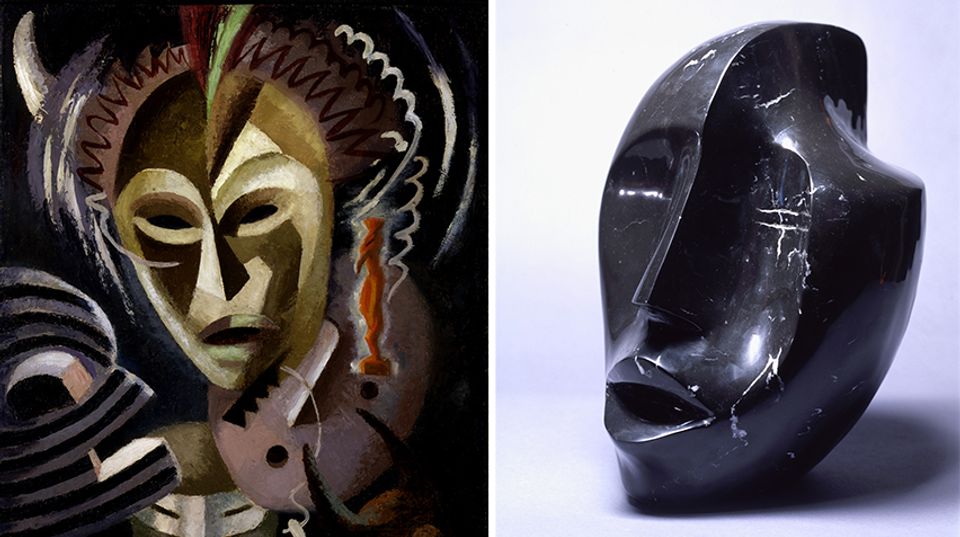Elizabeth Catlett
- Also known as
- Elizabeth Catlett-Mora
- Elizabeth Catlett Mora
- Alice Elizabeth Catlett
- Born
- Washington, District of Columbia, United States
- Died
- Cuernavaca, Mexico
- Active in
- New York, New York, United States
- Biography
Born in Washington, D.C., lives in Mexico. Prizewinning artist, teacher whose prints and sculptures, such as Homage to My Young Black Sisters (1968) and later works, express her concern about social problems.
Charles Sullivan, ed American Beauties: Women in Art and Literature (New York: Henry N. Abrams, Inc., in association with National Museum of American Art, 1993)
- Artist Biography
"I enjoy the beauty of materials, not only the beauty of forms. I love to see the grain of the wood assert itself in its own right and become integrated in the representation. I like to polish the stone to bring out its beauty." — Raquel Tibol, "The Work of Elizabeth Catlett," Los Universitarios (Magazine of the National University of Mexico, Nov. 1975): 15–16; cited in Thalia Gouma-Peterson, "Elizabeth Catlett: The Power of Human Feeling and of Art," Woman's Journal 4: 1 (Spring/Summer 1983): 48.
Although she presently lives and works in Mexico, her adopted country, Elizabeth Catlett has devoted her entire artistic career to a socially conscious art that represents the struggles of African Americans. Catlett's sculptures and prints are well known in the United States and Mexico, where she taught sculpture at Mexico's National University for many years. Catlett was born in 1915 in a comfortable middle-class neighborhood in Washington, D.C. She attended public schools in the nation's capital and enrolled in the art department at Howard University, where she graduated with honors in 1936.
The desire for further study motivated Catlett to seek admittance to graduate school at the University of Iowa, where she studied with Grant Wood and emigré sculptor Ossip Zadkine. Catlett was the first student to complete the requirements for the University of Iowa's Master of Fine Arts degree in 1940. That same year, Catlett received the "first honor" in sculpture at the American Negro Exposition in Chicago.
In 1941 Catlett married Charles White, a fellow artist from Chicago with whom she had exhibited in a number of shows. During the same year, White received a Rosenwald Fellowship to travel and study in the South and to make sketches for a proposed mural at Hampton Institute (now Hampton University). Catlett accompanied her husband and experienced directly the racism of the time. She subsequently vowed to dedicate her art to black awareness. While Catlett and her husband were traveling in the South, Catlett taught art at Dillard University in Louisiana, Prairie View College in Texas, and at Hampton Institute with Viktor Lowenfeld. In 1942, White and Catlett returned to New York and studied at the Art Students League.
During the early 1940s Catlett produced a number of sculptures depicting mother and child themes. These works were executed in a simple realistic style and shared a similar quiet strength with Catlett's works from her graduate school years. During the next decade Catlett's style moved toward abstraction, defined by smoothly rounded forms and gracefully elongated figures.
In 1946 Catlett received a Rosenwald Fellowship, and accompanied her husband to Mexico City where they studied painting, sculpture, and lithography. They became acquainted with the Mexican muralist David Alfaro Siqueiros, and lived in his house briefly. In 1947 Catlett and Charles White divorced and Catlett remained in Mexico City where she worked and developed a sense of identity with the city's residents. She began working with some of Mexico's most distinguished printmakers, and married the painter-engraver Francisco Mora. Elizabeth Catlett-Mora later became a naturalized citizen of Mexico. Today, she is regarded as one of Mexico's most celebrated artists. Though she has found warm acceptance in her adopted country, her African-American consciousness has inspired her to continue to produce sculptures and prints that deal with the struggles of African Americans.
Regenia A. Perry Free within Ourselves: African-American Artists in the Collection of the National Museum of American Art (Washington, D.C.: National Museum of American Art in Association with Pomegranate Art Books, 1992)














